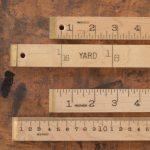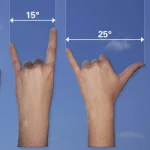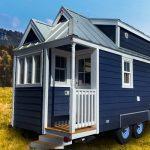What is the Standard Size of Brick? Brick Sizes & Dimensions
The Standard Brick Size in mm is 190 x 90 x 90 mm (Length x Width X Thickness) and in inches is 7.48 x 3.54 x 3.54 In.
Bricks have been used for centuries in both constructions and as decorative elements. Brick size has been standardized for a long time (Skip straight to the Standard size of brick charts)..
Way back in the day, when bricks were first made, they were all different sizes. This was a huge problem because it made it difficult to construct walls and buildings that were stable and consistent.
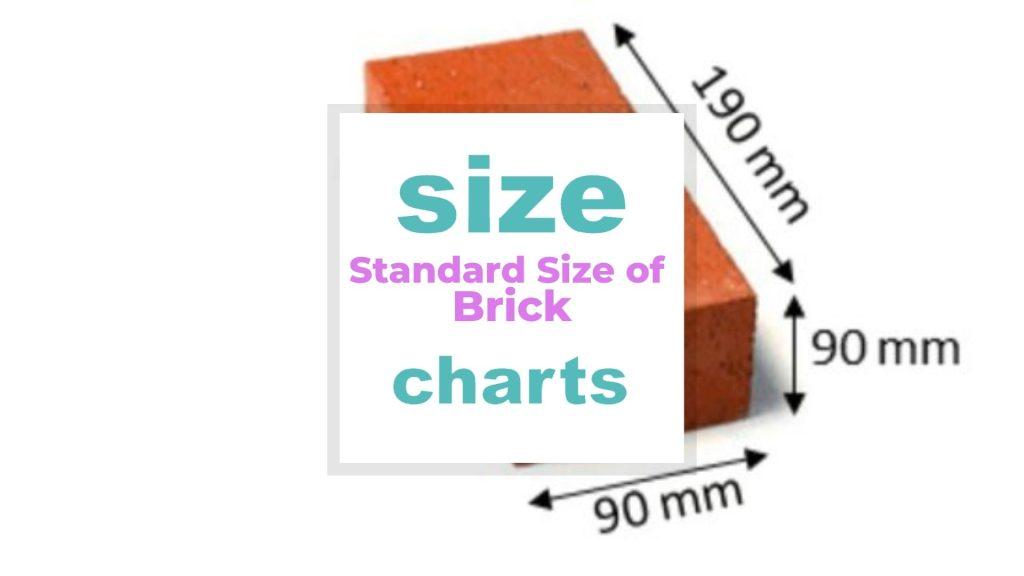
So a group of builders got together and decided that there needed to be a standard brick size. And in the 1800s, the first standard size for brick was established. It’s been tweaked and updated over the years, but it’s still the same basic size that we use today.
Most bricks are rectangular in shape, but what’s a standard brick size? This blog post will answer those questions and more!
We’ll take a comprehensive look at standard brick sizes and help you select the right one whenever in need of a brick for whatever purpose.
Jump right into the Frequently Asked Questions
Related: Drill Bit Size Chart and Different Types, Nail Gun Size Chart and Types of Nails for all kinds of jobs, Printable Ruler In Cm: Make it Yourself
Standard Size of Brick Table of Contents
- How brick size is determined
- Brick size chart (international)
- Face brick size by country
- Modular brick dimensions chart
- What is the size of a standard size brick?
- Frequently Asked Questions
How brick size is determined
Related: Rebar Sizes Chart and Different Types
Brick size is determined by a few factors, the most important of which is the thickness of the brick.
Bricks are manufactured in different thicknesses, and the thickness of the brick determines the standard size. So a brick 6 inches thick will be a standard size, and a brick 8 inches thick will be a plus-size brick.
But it’s not just the thickness of the brick that determines the size—the length and width of the brick also play a role. So even if two bricks have the same thickness, they may not be the same size if they have different dimensions.
Brick size chart (international)
Related: Solar Panel Size Guide for residence and industry, Storage Unit Size Chart – Guide To Comparing Spaces
| country | standard brick size(D x H x L) | |
| inches | cm | |
| USA | 3.62 x 2.25 x 7.62 | 9.19 x 5.715 x 19.35 |
| UK | 4 x 2.5 x 8.5 | 10.16 x 6.35 x 21.59 |
| Australia | 3 x 4.3 x 9 | 7.62 x 10.92 x 22.86 |
| India | 4.25 x 2.5 x 9 | 10.795 x 6.35 x 22.86 |

Face brick Size and dimensions in inches and mm (by country)
The bricks used outside a building or a house are called face bricks. The typical face brick dimensions for various nations are presented in the table below alphabetically (both in imperial and metric unit).
| Standard | Imperial (in) | Metric (mm) |
| Australia | 9 × 4⅓ × 3 | 230 × 110 × 76 |
| Denmark | 9 × 4¼ × 2¼ | 228 × 108 × 54 |
| Germany | 9 × 4¼ × 2¾ | 240 × 115 × 71 |
| India | 9 × 4¼ × 2¾ | 228 × 107 × 69 |
| Romania | 9 × 4¼ × 2½ | 240 × 115 × 63 |
| Russia | 10 × 4¾ × 2½ | 250 × 120 × 65 |
| South Africa | 8¾ × 4 × 3 | 222 × 106 × 73 |
| Sweden | 10 × 4¾ × 2½ | 250 × 120 × 62 |
| United Kingdom | 8½ × 4 × 2½ | 215 × 102.5 × 65 |
| United States | 7⅝ × 3⅝ × 2¼ | 194 × 92 × 57 |
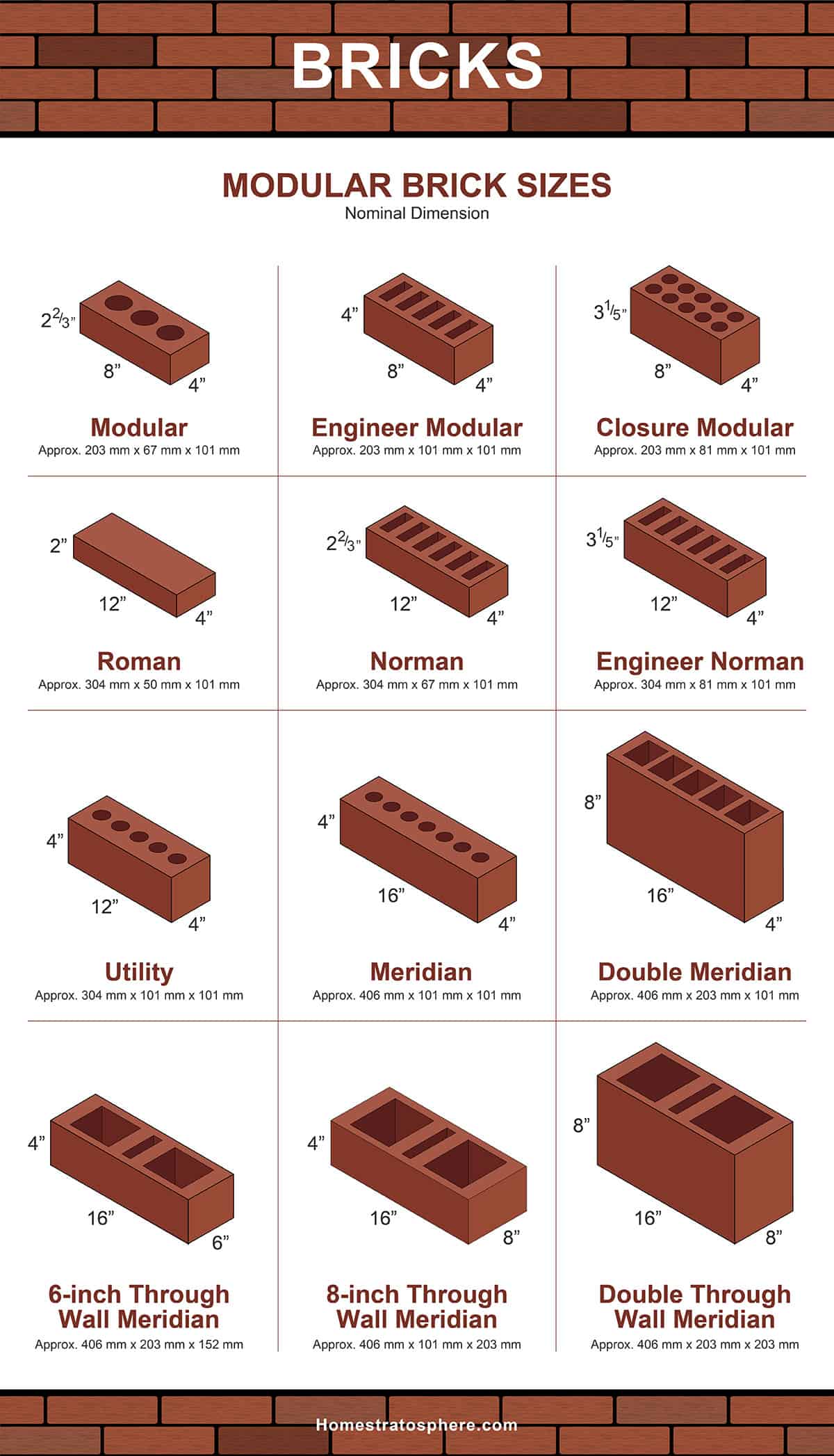
Modular brick dimensions chart
Related: Wrench Size Chart and Different Types
| Brick Type | mortar joint thickness | specified dimensions (D x H x L) | nominal dimensions (D x H x L) | |||
| inches | cm | inches | cm | inches | cm | |
| modular | 3/8” | 0.95 | 3.625 x 2.25 x 7.625 | 9.2075 x 5.715 x 19.3675 | 4 x 2.66 x 8 | 10.16 x 6.7564 x 20.32 |
| closure modular | 3/8” | 0.95 | 3.625 x 3.625 x 7.625 | 9.2075 x 9.2075 x 19.3675 | 4 x 4 x 8 | 10.16 x 10.16 x 20.32 |
| closure modular | 1/2” | 1.27 | 3.5 x 3.5 x 7.5 | 8.89 x 8.89 x 19.05 | 4 x 4 x 8 | 10.16 x 10.16 x 20.32 |
| engineer modular | 3/8” | 0.95 | 3.625 x 2.8 x 7.625 | 9.2075 x 7.112 x 19.3675 | 4 x 3.2 x 8 | 10.16 x 8.128 x 20.32 |
| engineer modular | 1/2” | 1.27 | 3.5 x 2.75 x 7.5 | 8.89 x 6.985 x 19.05 | 4 x 3.2 x 8 | 10.16 x 8.128 x 20.32 |
| jumbo | 3/8” | 0.95 | 3.625 x 2.75 x 8 | 9.2075 x 6.985 x 20.32 | 4 x 3 x 8 | 10.16 x 7.62 x 20.32 |
| jumbo | 1/2” | 1.27 | 3.5 x 2.5 x 8 | 8.89 x 6.35 x 20.32 | 4 x 3 x 8 | 10.16 x 7.62 x 20.32 |
| roman | 3/8” | 0.95 | 3.625 x 1.625 x 11.625 | 9.2075 x 4.1275 x 29.5275 | 4 x 2 x 12 | 10.16 x 5.08 x 30.48 |
| roman | 1/2” | 1.27 | 3.5 x 1.5 x 11.5 | 8.89 x 3.81 x 29.21 | 4 x 2 x 12 | 10.16 x 5.08 x 30.48 |
| norman | 3/8” | 0.95 | 3.625 x 2.25 x 11.625 | 9.2075 x 5.715 x 29.5275 | 4 x 2.66 x 12 | 10.16 x 6.7564 x 30.48 |
| norman | 1/2” | 1.27 | 3.5 x 2.25 x 11.5 | 8.89 x 5.715 x 29.21 | 4 x 2.66 x 12 | 10.16 x 6.7564 x 30.48 |
| engineer norman | 3/8” | 0.95 | 3.625 x 2.8 x 11.625 | 9.2075 x 7.112 x 29.5275 | 4 x 3.2 x 12 | 10.16 x 8.128 x 30.48 |
| engineer norman | 1/2” | 1.27 | 3.5 x 2.75 x 11.5 | 8.89 x 6.985 x 29.21 | 4 x 3.2 x 12 | 10.16 x 8.128 x 30.48 |
| utility | 3/8” | 0.95 | 3.625 x 3.625 x 11.625 | 9.2075 x 9.2075 x 29.5275 | 4 x 4 x 12 | 10.16 x 10.16 x 30.48 |
| utility | 1/2” | 1.27 | 3.625 x 3.625 x 11.625 | 9.2075 x 9.2075 x 29.5275 | 4 x 4 x 12 | 10.16 x 10.16 x 30.48 |
| meridian | 3/8” | 0.95 | 3.625 x 3.625 x 15.625 | 9.2075 x 9.2075 x 39.6875 | 4 x 4 x 16 | 10.16 x 10.16 x 40.64 |
| meridian | 1/2” | 1.27 | 3.5 x 3.5 x 15.5 | 8.89 x 8.89 x 39.37 | 4 x 4 x 16 | 10.16 x 10.16 x 40.64 |
| double meridian | 3/8” | 0.95 | 3.625 x 7.625 x 15.625 | 9.2075 x 19.3675 x 39.6875 | 4 x 8 x 16 | 10.16 x 20.32 x 40.64 |
| double meridian | 1/2” | 1.27 | 3.5 x 7.5 x 15.5 | 8.89 x 19.05 x 39.37 | 4 x 8 x 16 | 10.16 x 20.32 x 40.64 |
What is the size of a standard size brick?
Related: Staple gun Size Chart by model and staple gauge, Screw Size Chart And Thread Count Guide , Average 2 Car Garage Size: what is the size of a 2 car garage? , Ladder Size Chart and Dimensions: What size of ladder do I need?
Brick size is standardized for the most part, although there can be some variation from region to region. In general, the size of a standard brick is 8⅜ inches wide by 4 inches high by 2¼ inches deep.
Bricks are usually laid in a running bond pattern, which means they are aligned in a row with the spaces between them filled in with mortar. To ensure your bricks are laid correctly, it’s important to stagger the joints so they don’t line up. This will create a stronger wall and will also help prevent moisture from seeping into the structure.
When it comes to construction, standard-size brick is most often used because it’s strong and durable. It’s also less likely to warp or crack when it’s exposed to moisture. That said, if you’re looking for a more decorative option, thin bricks can be a great choice.
For example, the standard size for a brick paver is 4″ x 8″. This size is versatile and can be used for a variety of applications, from paving driveways to creating patio areas.
Brick pavers are available in various colors, so you can find the perfect match for your home’s exterior. In addition to the standard size, there are also larger pavers that are 6″ x 12″ and smaller pavers that are 2″ x 4″. No matter what size you choose, brick pavers are an elegant and durable choice for your home.
Learn more about the standard size of bricks (video)
Frequently Asked Questions
Why is a standard-size brick important?
Brick proportions have been around for centuries, and for a good reason—they work. But why are they the standard size?
When bricks are made in a factory, they’re cast in molds and allowed to dry. This process ensures that all the bricks are exactly the same size, which is important when laying them out. If they were all different sizes, it would be a total mess.
And speaking of messes, one of the other benefits of having a standard-size brick is that it makes construction a lot easier. You don’t have to worry about measuring and calculating how much mortar you need for each brick. It’s all taken care of for you. And so when it comes to construction, having a standard-size brick is good.
What is the standard size of brick in CM?
The standard size of a brick in cm is 22.86 x 11.43 x 7.62 centimeters, or 9 x 4.5 x 3 inches. Bricks are typically made from clay or shale and are fired in a kiln to harden them.
Bricks are then used to build houses, walls, and other structures. So the standard brick size allows for easy construction and helps to ensure that buildings are strong and durable.
Now, if you’re looking to buy bricks for a construction project, it’s important to know what the standard size is in your area. That way, you can make sure your bricks will fit together properly and you won’t have any problems with the construction process.
Keep in mind that a few different types of bricks are available on the market, so make sure you know what you’re looking for before you start shopping. There’s a good chance you’ll find what you need at your local hardware store or home improvement center.
What is the standard brick size in the UK
Modern bricks in the United Kingdom typically measure 215 mm by 102.5 mm by 65 mm, or 8 5/8 inches by 4 1/8 inches by 2 5/8 inches. This creates a unit size of 225 mm by 112.5 mm by 75 mm, or 9 mm by 4 12 mm, or a ratio of 6:3:2. In England, the ordinary brick’s length and width have remained largely consistent over the years. Still, its depth has changed throughout the years, ranging from approximately two inches (51 mm) or less in early times to around two and a half inches (64 mm) more recently.
American Standard Brick Dimensions in the US
In the US, the modular brick, which measures 7 5/8 x 3 5/8 x 2 14 inches (194 x 92 x 57 mm), is the most widely used type. According to the American Society for Testing and Materials, or ASTM, “current standard bricks in the United States are around 8 x 3 5/8 x 2 14 inches (203 x 92 x 57 mm). The computation of the number of bricks in a given run is made easier by this modular brick of 7 5/8 with a 3/8 mortar junction.
What is brick code?
Brick code is a system that’s used to identify bricks. It’s made up of a letter and a number; the letter tells you what type of brick it is, while the number tells you the size.
So, for example, if you have a brick with an “A” as the letter and a “4” as the number, that means it’s an all-purpose brick that’s 4 inches wide.
They are essentially markings that are imprinted on the bottom or side of bricks, which are used to identify the manufacturer, country of origin, and other important information. Each code is unique to the brick it is stamped on, and can be used to trace the brick back to its source.
Brick codes are an essential tool for bricklayers and masonry contractors, as they provide a way to ensure that only high-quality bricks are used in construction projects. In addition, brick codes can be used to track down missing or stolen bricks, and to determine whether a particular batch of bricks is up to code.
While brick codes may seem like a small detail, they can actually play a big role in the construction industry.
What is a Type 1 brick?
Type 1 bricks are made of high-quality clay that is fired at a high temperature. This results in a strong, durable brick with a smooth surface.
Type 1 bricks are the most common type of brick used in construction, and are suitable for a wide range of applications. They are often used for exterior walls, as they resist weathering well.
Type 1 bricks are also a good choice for load-bearing walls, as they can support a lot of weight. In addition, Type 1 bricks are easy to work with and can be cut and shaped to create various effects. As a result, they are one of the most versatile types of brick available.
What is the modular brick size?
The modular size of a brick is 8x4x2 inches. This means that the brick can be divided into eight horizontally and four vertically. It’s also important to note that a brick is not just an 8x4x2 inch cube—it has a beveled edge that makes it thinner on one side.
When choosing bricks for your project, it’s important to keep the modular size in mind. You don’t want to end up with a mismatch because the bricks don’t fit together correctly.
What is the standard size of brick in India?
The standard brick size in India is 9 inches by 4.5 inches by 3 inches. This size has been used for centuries and is still the most commonly used brick in the country.
Bricks of this size are easy to transport and handle and can be easily stacked to create walls of any height. In addition, the dimensions of this brick are perfectly suited for mud mortar, the most common type of mortar used in India.
Conclusion
Bricks are a construction staple, and it’s important to understand the sizing of a brick before you start your next build.
We hope that this guide has taught you everything you need to know about the standard size of a brick, especially dimensions and types. So whether you’re a professional contractor or a DIY novice, bookmark this guide and use it as your go-to source for all things brick-related!
Have you got questions? No worries, please ask in the comments section and we’ll certainly be very glad to help you.
Picture in this post is by Tim Mossholer on Unsplash
Related to Standard Size of Brick
- Barbie Doll Size : What are different sizes of Barbie ?
- Blanket sizes chart : blanket sizes and dimensions in inches & cm
- Tablecloth size chart – What are standard tablecloth sizes ?
- How Many Meters Are In A Yard?
- How Many Centimeters are 8 Inches?
- Knife Sizes and Different Types
- 4 Inches is How Many Centimeters?
- Light Bulb Base Sizes : What size light bulb base do I need?
- Tesalate Towel Size Guide
- Light bulb Size : What are the different and standard bulb sizes?
- Duvet Sizes: What is a Standard-Size Duvet?
- Single Car Garage Size and Dimensions
- How High Is A Story?
- How Much Does 1 Cup Of Rice Weigh?
- Cast Iron Skillet Sizes: What Size Do I Need?
- Dollar Bills Size Chart
- Pizza Sizes: Which One to Order?
- How To Measure A Foot Without A Ruler
- Wine Glass Size Chart
- Tiny Houses Size Charts
- How Many Inches Are In 20 Centimeters?
- How To Measure 1 Meter Without A Ruler?
- Nightstand Size and Dimensions for Bedroom
- Lamp Shade Size Guide – What size lampshade do I need?




